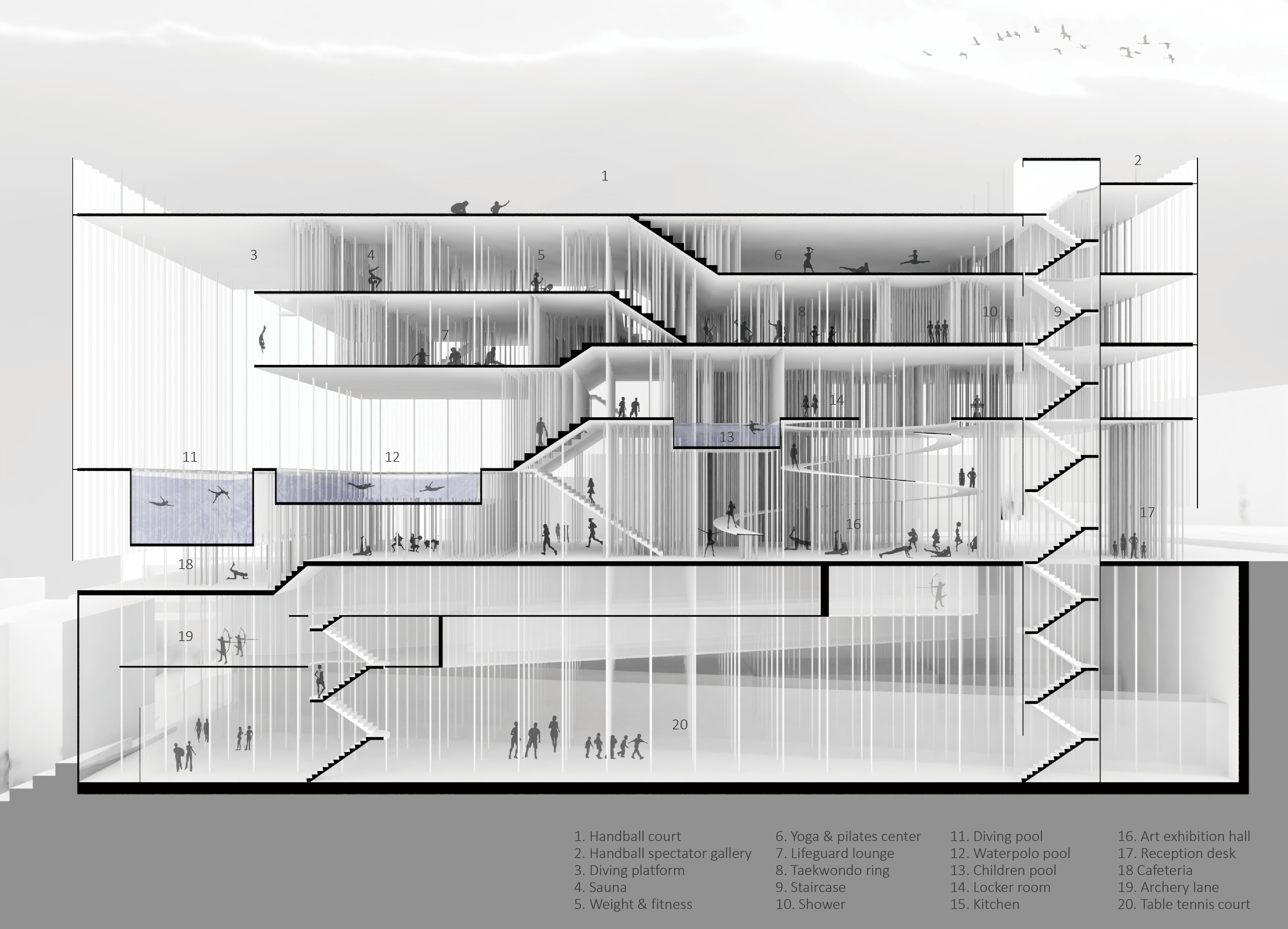







COLUMNS
Differentiated Columns
Heavy structural elements such as thick columns or beams could be obstacles for enjoying sports in a building; they keep spectators from watching panoramic views as well as players from concentrating on the game. Steel structure allows minimized columns by differentiating the columns, which assimilates with the scenery. We suggest suspension structure, in which slabs are hanged on the uppermost slabs. This structure would enhance dynamic impression which is necessary for the sport facilities with lightness.
Free Plan
Unlike common building in which structural elements influence on spatial plan of the building, this building has free plan with very slender columns, in reality, strings and no walls. These steel strings take various thicknesses in diameter, following the distance from the cores; the closer to the cores, the thicker the strings are. Diverse colors of the cable in this diagram represent their varied diameters. These cables play a role in defining the space and provide dramatic scenery, creating diversified densities of the spaces.
Program Arrangement
Practical and efficient configuration containing various sports programs in a limited area necessitate smart three dimensional combinations such as “Tetris blocks.” With close dissection in scale and form of each sport programs, we investigated on an optimized arrangement of programs in the building; since they are relatively free from the structural restrictions, the slabs can take diverse heights of levels, which minimize wasting of unnecessary space by being assembled like the blocks.
Multi-purpose Columns
The main strength of this building is that it has extraordinarily thin columns. The characteristic of steel structure which is resistant against a tensile force, lessons the burden of straight columns, and allows the columns to be differentiated. These columns are naturally assimilated into the scenery, functioning as a partitions of programs as well as structural components.

